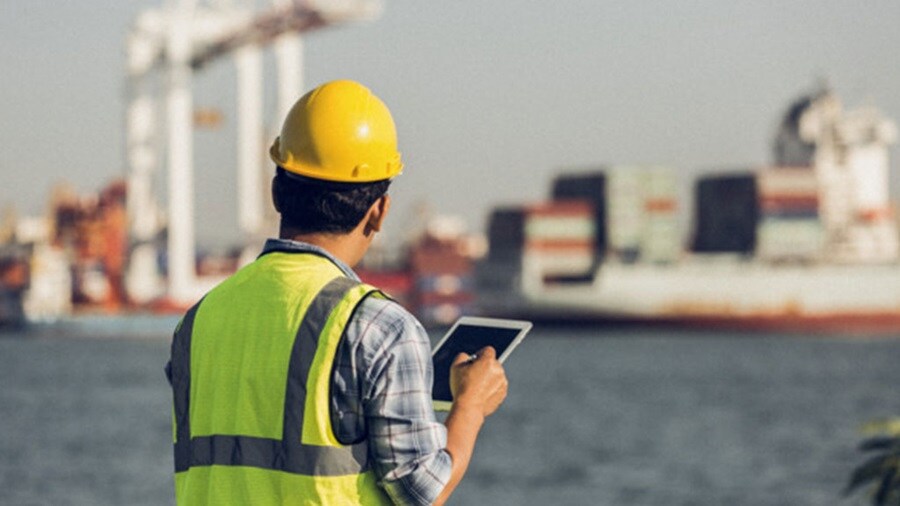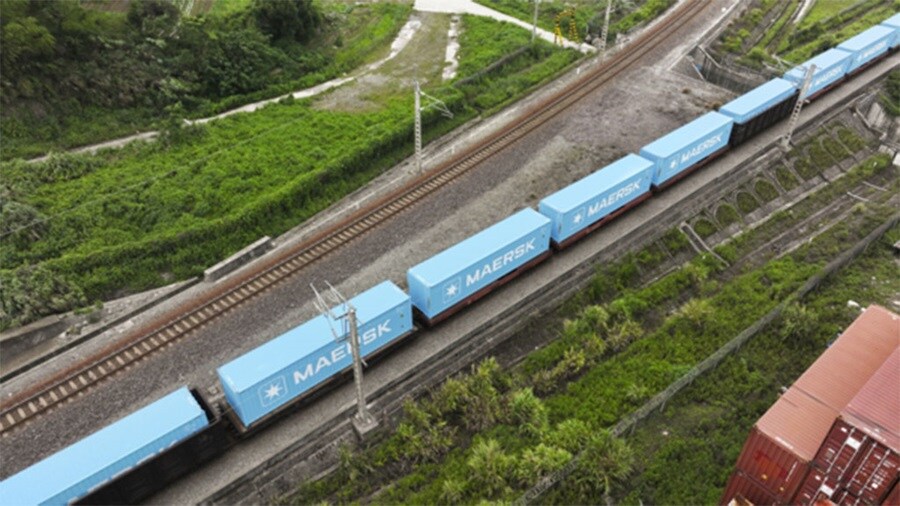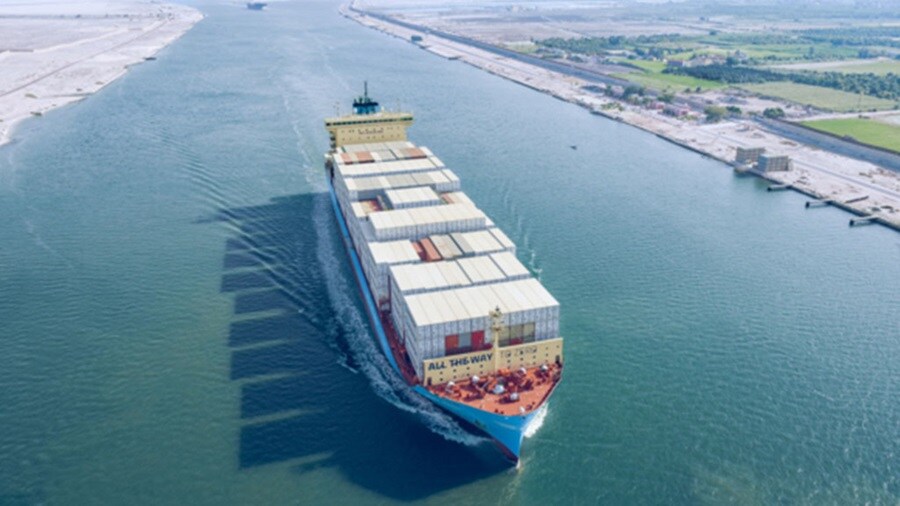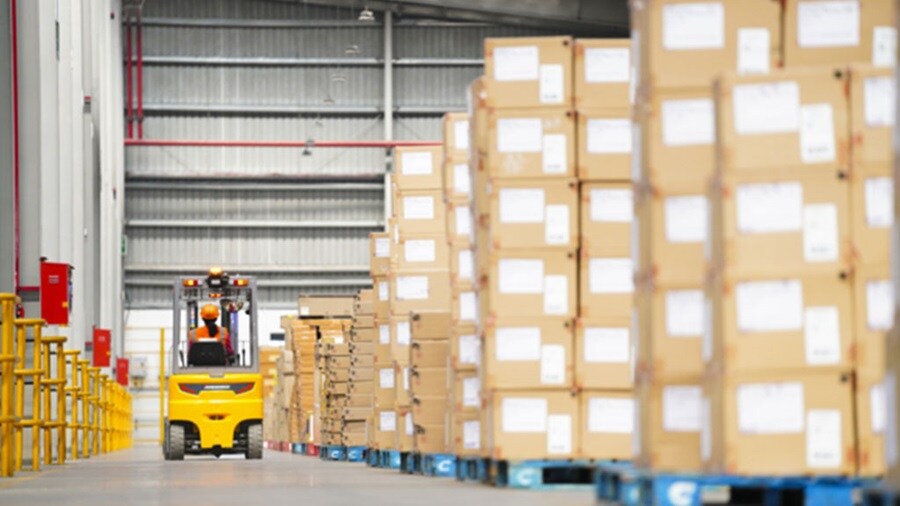As market dynamics evolve and peak-season activity intensifies, many businesses are rethinking their sourcing patterns, transport routes, and inventory buffers to stay ahead of fluctuating demand, capacity constraints, and regulatory shifts. To support your planning efforts, our Ocean, Inland, Warehousing, and Customs teams have compiled the latest insights to provide you with a clearer view of current conditions across IMEA and help keep your supply chain on track.
To receive Maersk IMEA Market Update in your inbox, sign up for our logistics newsletter here. For macroeconomic updates and their impact on your supply chain, head to the Maersk Global Market Update – Summer 2025.
Ocean and Key Ports Update
Ocean operations across IMEA remain stable overall, with most trade routes operating reliably despite seasonal weather patterns and evolving geopolitical conditions. While some areas, particularly in South Asia and parts of the Middle East, are experiencing temporary pressure, resilient network planning and steady trade activity continue to support the region’s supply chains.
In South Asia, the onset of the monsoon season has led to increased congestion at the Port of Colombo. Heavy rainfall and strong winds have disrupted terminal operations, causing berthing delays and increased yard density. These issues have affected vessel connectivity and cargo flow, resulting in delays to regional schedules.
To maintain service stability, we have taken proactive steps across the network. In Colombo, we are diverting cargo where necessary and working closely with terminal operators to reduce delays. In the Middle East, business continuity plans have enabled consistent service delivery.
The recent geopolitical escalations in the Middle East that began on June 12 prompted Maersk to activate its business continuity protocols. As conditions stabilize, we are monitoring the situation closely and are prepared to act swiftly if circumstances change.
Across Africa, the trade environment continues to evolve, shaped by shifting demand patterns and infrastructure development. In East Africa, imports from the Far East—particularly China, Japan, and South Korea remain a significant driver of economic activity, reflecting ongoing demand for consumer electronics, vehicles, and construction materials. In West Africa, import volumes continue to show an upward trend, supported by investment in infrastructure and rising consumer demand. Nigeria, Ghana, and Senegal remain key contributors to this momentum. Source: Container Trades Statistics (Q1 2025 regional trends)
Trade volumes in South Africa are beginning to recover after a slow start to the year. Congestion at the Port of Durban has eased, allowing for more consistent schedules, and demand is gradually picking up as businesses begin planning for the peak season.
For the Far East–South Africa trade lane, we are adjusting capacity by introducing larger vessels to support growing volume and restore reliability. In West Africa, our direct FEW2, FEW3, and FEW6 services remain central to meeting demand in key destinations.
Looking ahead, customers may experience delays on routes affected by the South Asian monsoon through July. We recommend building flexibility into transit schedules and engaging local teams early to manage potential weather-related disruptions. For trade into Africa, particularly the southern and western regions, booking early will help ensure access to space and schedule certainty. Customers can benefit from using our digital tools for up-to-date shipment visibility and service alerts.
Customs Update
Preparing for Tariff Shifts and Trade Realignment

Tariff policy continues to dominate the global trade landscape. The U.S. has announced a significant tariff increase on steel and aluminum—doubling rates from 25% to 50% for most origins, excluding the UK. This move, combined with the anticipated end of the 90-day pause on reciprocal tariffs (set to expire July 8), could reshape cost structures across key industries such as automotive, heavy machinery, and construction.
Markets are on alert ahead of a major U.S. announcement expected on July 9, where new bilateral trade deals are likely to be disclosed. A deal with India is highly anticipated and could unlock increased trade volumes and duty-saving opportunities for Indian exporters.
What Should You Expect?
- Tariff Resumptions Likely: If the pause expires without extensions, reciprocal tariffs may be reinstated for countries still negotiating terms.
- Trade Realignments Incoming: New trade deals may offer benefits—but only for those able to react quickly.
- Cost Volatility: Sharp tariff increases may disrupt existing sourcing and customs cost models.
To help businesses navigate this fluid environment, we’ve introduced the Trade & Tariff Studio—a centralized digital tool designed to streamline tariff management and uncover compliance and duty-saving opportunities. Built into the Maersk Customs Navigator, the studio allows users to:
- Evaluate tariff and regulatory exposure across regions and products.
- Identify and act on opportunities from FTAs and preferential duty programs.
- Detect misclassifications and potential violations related to UFLPA, CBAM, and denied party lists.
- Run a Compliance Health Check for immediate risk visibility and cost-saving insights.
To stay ahead, customers should closely monitor official notifications on tariff changes and the potential reinstatement of reciprocal duties expected in early July. It’s essential to assess exposure, particularly for steel and aluminium imports—as these sectors, including automotive and heavy manufacturing, face the highest risk of cost increases. Updating customs compliance plans is also key such as identifying opportunities to leverage FTAs or reclassify goods where applicable.
As trade negotiations between the U.S. and India progress, customers should track developments that may open new opportunities in sectors such as electronics, pharmaceuticals, textiles, and specialty goods.
We advise customers to prepare for both disruption and opportunity by reviewing the flexibility of your supply chain, especially around sourcing, pricing strategies, and customs budgeting.
New Compliance Rules in Saudi Arabia
In a move to improve cargo handling and import compliance, Saudi Arabia has rolled out two key customs regulations in 2025
- Mandatory Use of Pallets – Circular No. 6/2025
- Effective: Phased implementation from May 2025 for over one year.
- Requirement: All containerized goods must be loaded and stowed using pallets at Saudi ports.
- Exemptions: Apply for bulk, oversized, or heavy machinery shipments—with formal approval from the Saudi Ports Authority and ZATCA.
- Mandatory Product & Shipment Conformity Certificates (PCoC & SCoC)
- Effective: 1 January 2025
- Requirement: All imports must have both PCoC and SCoC issued through the SABER platform.
- Impact: Self-declaration is no longer accepted. Non-compliance can lead to shipment delays and financial penalties.
To support customers, navigate these regulatory changes, Maersk offers end-to-end support—from managing palletization compliance to pre-registering product portfolios and handling all necessary import documentation. This includes securing PCoC and SCoC certificates via the SABER platform, ensuring shipments meet Saudi requirements and avoid delays or penalties. Connect with your Maersk contact to ensure smooth compliance and minimize disruption to your Saudi-bound shipments.
Inland Update
Global supply chain efficiencies rely on the smooth flow of goods through their chain. Amongst others, road haulage has faced significant challenges that often disrupted the flow and continues to increase the cost of logistics for the cargo owner and customers worldwide.

Nigeria is not immune to such inefficiencies. As a major economic power in Africa, the import and export activities are still plagued by various huddles including road transportation. The waterways in Nigeria have presented some reprieve to this situation, through barge services which offer groundbreaking alternatives to avoid the heavy road congestions in cargo transportation and connecting key ports from Lagos (Apapa and Tin Can), Port Harcourt and Onne to customers desired destinations. Maersk continues to strive to offer creative solutions to its customers and thus offers multimodal solutions on road, rail and waterways, including last mile store -door delivery. Customers can explore current service available from Apapa and Onne, catering for both exports and imports flows.
- Apapa, to three major locations: Ikorodu, Mile 2 and Abule Oshun - servicing inner and outside city limits customers; Ogun state, Ibadan and up-country customers.
- Onne port to Port Harcourt City and by Q3 2025 a new service will be available for the Onne imports into Calabar.
With most trade activities revolving around importation of goods and services in Africa, Maersk remains committed to simplifying our customers supply chain and facilitating efficient multimodal solutions for imports from ports to the respective destinations across the continent.
India & Middle East
Middle East conflict and impact on Haifa imports
While a ceasefire is currently in place in the Middle East, the situation remains fluid, and there is still a potential risk of renewed disruptions. One area of concern is the port infrastructure in Haifa, which could face operational slowdowns if tensions were to escalate again—potentially affecting key export flows, including garments. To ensure our customers are prepared, we have put contingency plans in place to help mitigate potential impacts and maintain supply chain continuity should conditions change. In the event of a complete Haifa port closure, garment customers would have three alternatives:

- Suez Canal: Moving cargo through Egypt
- Inland Solution: Moving cargo to Saudi Arabia by truck or rail, then shipping it from there by ocean.
- Ocean option: Transport the cargo via our ocean solutions through Aqaba port. Then, transport the cargo from Aqaba port via our inland solutions.
For the latest updates on your cargo, please sign up for ETA notifications and you will be updated as any changes are made in the system.
Warehousing Update
Spotlight on Pakistan
Pakistan’s supply chain environment is showing signs of stabilisation, though operational challenges persist due to recent geopolitical tensions and domestic disruptions. As the government moves to restore investor confidence through macroeconomic reforms, infrastructure and trade dynamics remain sensitive to both regional security concerns and internal political activity.
The start of 2025 was marked by significant supply chain strain. Political strikes and road closures during Eid holidays led to partial shutdowns along major inland corridors, with some routes blocked for over two weeks. These events coincided with delays in the national budget alignment, creating uncertainty around import duties and fiscal policy. While the Federal Budget for FY25 is now under implementation, several procedural aspects are still being clarified and are expected to be settled in July.
Despite these headwinds, macroeconomic signals are cautiously improving. The Pakistani Rupee has stabilised following currency management reforms, and inflation has eased from previous highs. These factors, combined with the government's renewed focus on attracting foreign direct investment (FDI), are expected to boost confidence across manufacturing, energy, and retail sectors.
To support customers navigate the immediate impacts of transport and regulatory disruptions, we implemented contingency solutions at key logistics hubs. Temporary cross-docking options and short-term storage capacity were introduced to facilitate cargo flow when overland movement was restricted. Additionally, we deployed overflow parking zones for containerised vehicles, allowing continued access and staging during route closures.
These actions helped ensure cargo remained accessible even during prolonged stoppages, reducing demurrage risk and providing alternative options for last-mile delivery planning.

As a result of recent volatility, many customers in Pakistan have begun adapting their logistics strategies. Several businesses have increased inventory cover by 7–14 days to ensure continuity during inland transport delays. We recommend maintaining this buffer through the monsoon season and into the post-budget period as policies stabilise.
Customers are also advised to stay informed on fiscal regulation changes—particularly around customs duties and sales tax implementation—as July progresses. Our local teams are available to advise on the latest changes and support flexible routing and warehousing options as needed.
With macroeconomic indicators stabilising and the political climate showing signs of normalisation, the outlook for H2 2025 is more encouraging. The government has outlined investment incentives targeting energy, logistics, and construction, all of which could stimulate trade and import volumes in the coming quarters.
Demographic trends also support a positive trajectory. With one of the region’s youngest populations and rising urbanisation, consumer appetite for FMCG, electronics, and construction materials is likely to increase over time. These fundamentals suggest the potential for a medium-term growth outlook across import and distribution sectors.
We remain closely engaged with local stakeholders and are committed to helping customers adapt with resilience as the regulatory and economic landscape evolves.
Useful links
More News and Insights from Maersk
- Understanding the customs and trade dynamics in East Africa
- The modernisation of customs is reshaping trade dynamics in South Asia
- Navigating shifting customs regulations in the Middle East
- Maersk launches “Maersk Trade & Tariff Studio” helping global supply chains navigate tariff volatility and complexity | Maersk
Visit our Insights Hub where we share the latest trends in supply chain digitization, sustainability, growth, resilience, and integrated logistics.
To sign up for the Maersk IMEA customer newsletter, click here and update your preferences when prompted via email.
Check Maersk market updates from across other regions by clicking here.
Anything you need, we’re here to help
I agree to receive logistics related news and marketing updates by email, phone, messaging services (e.g. WhatsApp) and other digital platforms, including but not limited to social media (e.g., LinkedIn) from A. P. Moller-Maersk and its affiliated companies (see latest company overview). I understand that I can opt out of such Maersk communications at any time by clicking the unsubscribe link. To see how we use your personal data, please read our Privacy Notification.
By completing this form, you confirm that you agree to the use of your personal data by Maersk as described in our Privacy Notification.
